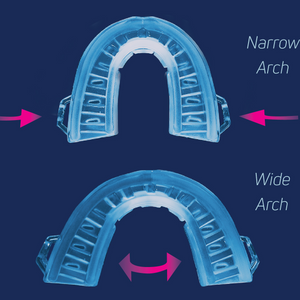Jun 26, 2025
INSOMNIA: ITS CAUSES AND REMEDIES
Insomnia can feel like your brain’s stuck in overdrive while your body begs for rest—and the causes are complex. Here are some of the most common culprits:
-
Stress and anxiety: Worries about work, relationships, or health can keep your mind racing at night.
-
Mental health conditions: Depression, anxiety disorders, and PTSD are strongly linked to chronic insomnia.
-
Poor sleep habits: Irregular bedtimes, screen time before bed, or a noisy sleep environment can all disrupt your natural sleep rhythm.
-
Medical conditions: Chronic pain, asthma, acid reflux, and even itchy skin conditions like eczema can make it hard to fall or stay asleep.
-
Medications and substances: Some prescriptions, caffeine, alcohol, and nicotine can interfere with sleep cycles.
-
Circadian rhythm disruptions: Jet lag, shift work, or even being a natural night owl can throw off your internal clock.
STRESS AND INSOMNIA ARE BAD DANCE PARTNERS
Stress and insomnia create a vicious cycle and keep stepping on each other’s toes. When you're stressed, your body releases cortisol, the “fight or flight” hormone. That’s great if you’re running from a bear—not so great when you’re trying to drift off to sleep. Elevated cortisol levels can make it harder to fall asleep, stay asleep, or get deep, restorative rest. But it doesn’t stop there. Lack of sleep actually increases stress. You lie awake worrying, which makes you more tired, which makes you more anxious, and so on.
TYPES OF STRESS-RELATED INSOMNIA
Acute insomnia: Often triggered by a specific event—like a breakup, job interview, or big move.
Chronic stress insomnia: When stress becomes a long-term companion, it can lead to persistent sleep issues that last for months.
The good news? There are ways to break the cycle. Techniques like progressive muscle relaxation, journaling before bed, and cognitive behavioral therapy for insomnia (CBT-I) have been shown to help.
STRESS REWIRES THE BODY’S SLEEP SYSTEM
When you're under stress, your brain activates the hypothalamic-pituitary-adrenal (HPA) axis, which kicks off a cascade of hormones—most notably cortisol and adrenaline. These hormones are part of your “fight or flight” response, designed to keep you alert and ready for action. But when this system stays activated—like when you're lying in bed replaying your to-do list—it becomes a problem.
Here’s what happens physiologically:
-
Increased cortisol levels make it harder to fall asleep and stay asleep. Cortisol is naturally higher in the morning to help you wake up, but stress can keep it elevated at night.
-
Heart rate and blood pressure rise, keeping your body in a state of hyperarousal that’s incompatible with restful sleep.
-
Muscle tension and shallow breathing can make it physically uncomfortable to relax, further delaying sleep onset.
-
Sleep fragmentation becomes more common, meaning you may wake up frequently or not reach deep, restorative stages of sleep.
Over time, this can lead to chronic insomnia, and the lack of sleep itself becomes a stressor—creating a feedback loop that’s hard to break.
The good news? This cycle can be interrupted. Relaxation techniques, consistent sleep routines, and cognitive behavioral therapy for insomnia (CBT-I) are all proven ways to calm the HPA axis and restore healthy sleep patterns.
PROVEN WAYS TO REDUCE STRESS
Mind-Body Techniques
-
Progressive Muscle Relaxation (PMR): Tense and release muscle groups one by one, starting from your toes and working upward. It helps release physical tension and brings awareness to your body.
-
Guided Imagery: Close your eyes and imagine a peaceful scene—like a quiet beach or forest. Engaging your senses in this mental escape can calm your nervous system.
-
Deep Breathing: Try box breathing (inhale for 4, hold for 4, exhale for 4, hold for 4). It slows your heart rate and signals your brain that you’re safe.
Mental Shifts
-
Meditation: Even 10 minutes a day can reduce cortisol levels and improve emotional regulation.
-
Positive Self-Talk: Replacing “I can’t handle this” with “I’m doing the best I can” can shift your mindset and reduce stress responses.
-
Gratitude Practice: Writing down three things you’re grateful for each day can rewire your brain toward positivity.
Physical & Sensory Strategies
-
Exercise: A brisk walk or short workout releases endorphins and clears mental fog.
-
Aromatherapy: Scents like lavender, chamomile, or sandalwood can have calming effects.
-
Creative Expression: Drawing, journaling, laughing (comedy) or playing music can help process emotions and reduce tension.
WHAT IS PMR?
Progressive Muscle Relaxation (PMR) is like a full-body sigh of relief, designed to help you release tension you didn’t even realize you were holding. PMR is a technique where you systematically tense and then relax different muscle groups in your body. It was developed by Dr. Edmund Jacobson in the 1920s, based on the idea that physical relaxation leads to mental calm.
How PMR Works
You start at one end of your body—usually your feet—and work your way up. For each muscle group:
-
Inhale deeply and tense the muscles (e.g., curl your toes or clench your fists) for about 5 seconds.
-
Exhale slowly and release the tension, focusing on the sensation of relaxation.
-
Pause for a few seconds, then move to the next group.
Here’s a typical sequence:
- Toes and feet
- Calves
- Thighs
- Glutes
- Abdomen
- Chest
- Hands
- Arms
- Shoulders
- Neck
- Jaw
- Face
Why PMR Works
Tensing helps you become aware of what tension feels like. Releasing it helps your body shift from the sympathetic nervous system (fight-or-flight) to the parasympathetic system (rest-and-digest), lowering heart rate, blood pressure, and cortisol levels.
When to Use PMR
- Before bed to ease into sleep
- During stressful moments (like before a presentation)
- As part of a daily mindfulness or meditation routine
It’s simple, portable, and surprisingly powerful.







